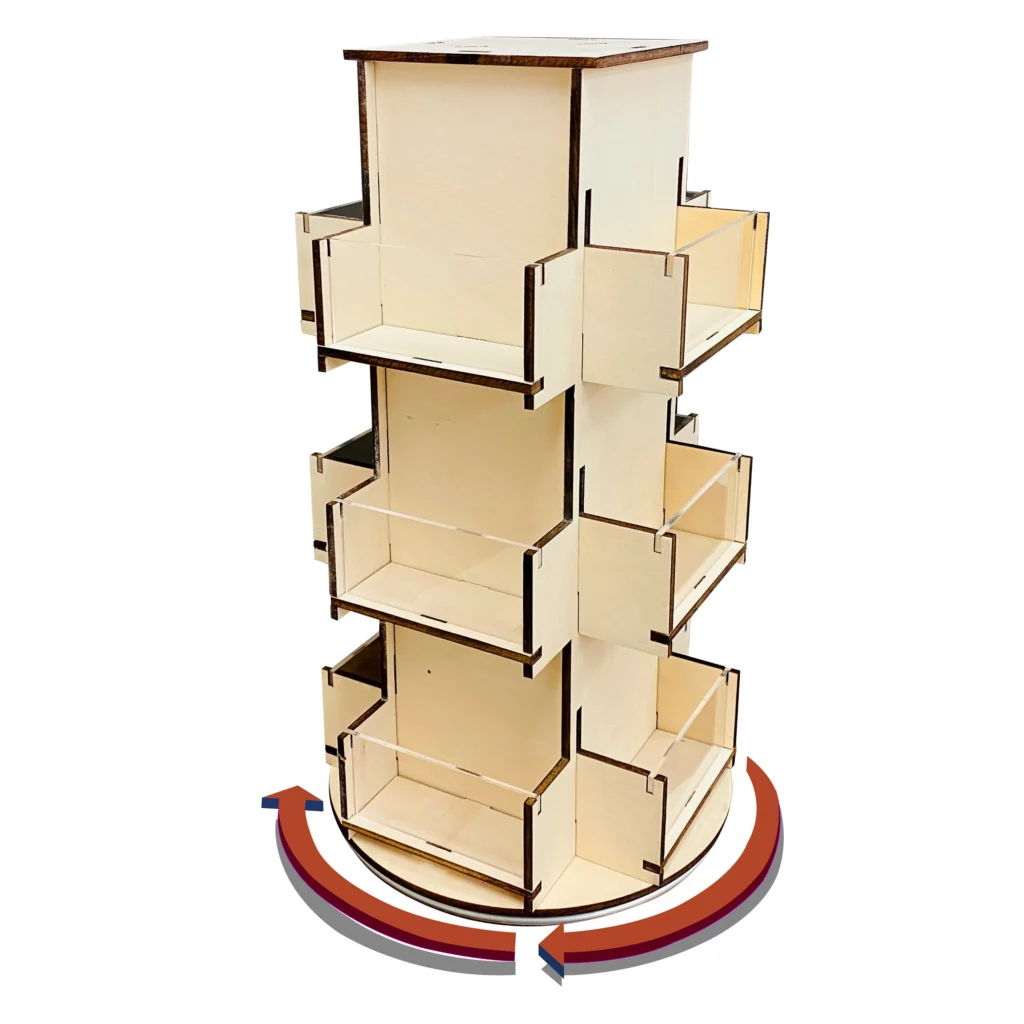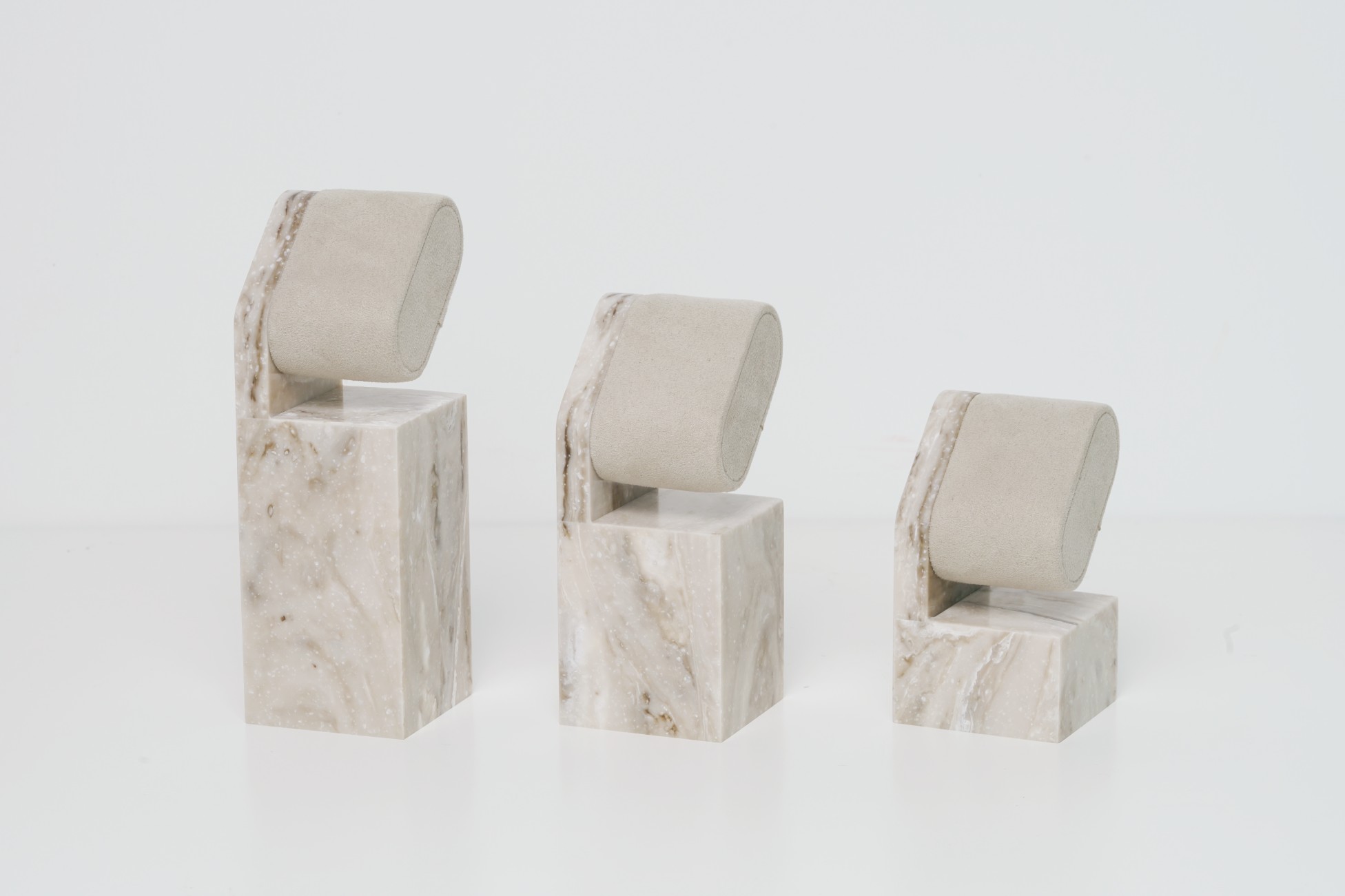Choosing the wrong materials for your retail props can lead to waste, damage, or overspending. Many brands fall into the trap of using long-term materials for short-term campaigns—or vice versa—resulting in poor ROI and sustainability issues. The key? Align your prop material to the intended lifecycle of the display.
In this guide, we’ll explore the best material choices for both reusable and disposable retail props and how to plan smarter for sustainability, logistics, and visual impact.
✅ Featured Summary
For reusable displays, use modular, durable materials like PET-laminated MDF or powder-coated steel.
For disposable props, choose lightweight, recyclable boards like honeycomb or sugarcane pulp.
The design strategy should match the usage cycle, from first setup to final breakdown.

Why This Matters: Lifecycle Drives Material Logic
Before briefing your supplier, clarify one question: Is this prop meant to last one campaign—or multiple seasons? That single decision impacts:
- Upfront cost vs. long-term value
- Sustainability certifications and VOC output
- Packing, logistics, and reusability planning
At Samtop, we help brands align material decisions to lifecycle strategy, so every fixture is purpose-built.
Reusable Retail Props: Best Materials
| Material | Benefits | Ideal Use |
|---|---|---|
| PET-Laminated MDF | Scratch-resistant, easy to clean | Cosmetic counters, testers |
| Frosted/Clear Acrylic | Durable, premium visual lightness | Fragrance risers, luxury podiums |
| FSC Plywood + Veneer | Warmth, rigidity, brand authenticity | Display bases, lifestyle categories |
| Powder-Coated Metal | High load-bearing, modular | Multi-market rollouts |
| Compact Laminate (e.g. FENIX) | Matte, anti-fingerprint, super durable | High-traffic zones |
📌 Use modular fasteners (cam locks, magnets), interchangeable graphics, and flat-pack design logic to extend fixture usability across campaigns.
Disposable / Seasonal Props: Best Materials
| Material | Benefits | Ideal Use |
|---|---|---|
| Corrugated Cardboard | Light, printable, recyclable | POP displays, dump bins, temporary podiums |
| Honeycomb Board | Rigid yet foldable, high volume-to-weight | Seasonal FSDUs, retail backwalls |
| PVC-Free Foamcore | Clean look, good for signage | Hero blocks, shelf talkers |
| Sugarcane Board / Pulp | Compostable, natural finish | Sustainability-themed promos |
| Thin PET Sheets (0.5–1mm) | Transparency, flexibility | Layered windows, backlit elements |
📌 Avoid lamination, solvent-based glue, or plastic-paper fusion when planning end-of-life recyclability.
Design Strategies for Maximum ROI
- 🔄 Swap graphics: Use sleeves, magnets, or hook-and-loop for quick updates
- 📦 Flat-pack logistics: Reduce CBM and shipping waste
- 🧼 Finish wisely: Matte or anti-fingerprint coatings ease maintenance
- 🌍 Use eco-labeling: Add subtle recyclability instructions on each component
- 🧩 Design for teardown: Use labeled parts, modular joinery, and visual guides for repacking or recycling
Case Study: Mother’s Day Gifting Unit
| Before | After |
|---|---|
| Coated foamcore + paperboard | Molded sugarcane board + printed PET sleeves |
| Non-recyclable, wasteful | 100% recyclable or compostable |
| Fragile in transit | 40% lighter, more resilient |
Result: +Brand image, -Logistics cost, 100% ESG report-ready
💬 FAQ
Q: Can a prop be both “reusable” and “eco”?
✅ Yes — pair FSC-certified MDF or plywood with recyclable PET sleeves and modular branding elements.


